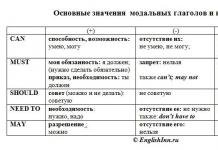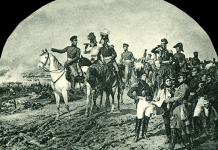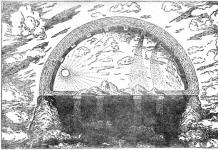In urban areas, soils are subject to pollution, which can be divided into mechanical, chemical and biological.
Mechanical pollution consists of soil clogging with coarse material in the form of construction waste, broken glass, ceramics and other relatively inert waste. This has an adverse effect on mechanical properties soil
Chemical contamination of soils is associated with the penetration of substances into them that change the natural concentration of chemical elements to a level exceeding the norm, resulting in a change in the physical chemical properties soil This type of contamination is the most common, long-term and dangerous.
Biological pollution is associated with the introduction into the soil environment and the reproduction in it of organisms dangerous to humans. Bacteriological, helminthological and entomological indicators of the condition of soils in urban areas determine the level of their epidemiological danger. These types of pollution are subject to control primarily in residential and recreational areas.
Main soil pollutants:
1) pesticides (toxic chemicals);
2) mineral fertilizers;
3) waste and industrial waste;
4) gas and smoke emissions of pollutants into the atmosphere;
5) oil and petroleum products.
Currently, the impact of pesticides on public health is equated to the impact of radioactive substances on humans. According to WHO, up to 2 million people in the world are poisoned by pesticides every year, of which 40 thousand are fatal. The vast majority of pesticides used end up in environment(water, air).
They cause profound changes in the entire ecosystem, affecting all living organisms, while being used to destroy a very limited number of species. As a result, a huge number of other biological species (beneficial insects, birds) are intoxicated to the point of their extinction.
Among pesticides, the greatest danger is persistent organochlorine compounds, which can persist in soils for many years, and even their small concentrations as a result of biological accumulation can become dangerous to the life of organisms, since they have mutagenic and carcinogenic properties. Once in the human body, they can cause rapid growth of malignant tumors, as well as affect the body genetically, which is dangerous for the health of future generations. That is why the use of the most dangerous of them, DDT, is prohibited in our country and in most developed countries. Pesticides can penetrate plants from contaminated soil through root system, accumulate in biomass and subsequently infect food chain. When spraying pesticides, significant intoxication of birds (avifauna) is observed. Populations of song and migratory thrushes, larks and other passerines are particularly affected.
Long-term use of pesticides is also associated with the development of resistant races of pests and the emergence of new pests whose natural enemies have been destroyed.
Thus, we can confidently state that the general environmental damage from the use of soil-polluting pesticides many times exceeds the benefits from their use.
It also turned out that nitrates, when in excess, reduce the oxygen content in the soil, and this contributes to an increased release of two “greenhouse” gases into the atmosphere - nitrous oxide and methane. Nitrates are also dangerous for humans: at concentrations above 50 mg/l, their direct general toxic effect is noted, in particular, the occurrence of methemoglobinemia due to the biological transformation of nitrates into toxic nitrogen compounds.
Lead to intense soil pollution waste and production waste. The country annually generates over a billion tons of industrial waste, of which more than 50 million tons are particularly toxic. Huge areas of land are occupied by landfills, ash dumps, tailings dumps, etc., which intensively pollute soils, the ability of which to self-purify, as is known, is limited.
Huge harm to soil functioning is caused by gas and smoke emissions from industrial enterprises. Soil can accumulate pollutants that are very dangerous to human health, such as heavy metals. In 1997 almost 0.4 million hectares in our country were contaminated with copper, lead, cadmium, etc. Even more land was contaminated with radionuclides and radioisotopes as a result of the Chernobyl disaster.
Land pollution is becoming one of the serious environmental problems oil and petroleum products
The main anthropogenic impacts on rocks include: static and dynamic loads, thermal, electrical and other impacts.
Static loads. This is the most common type of anthropogenic impact on rocks. Under the influence of static loads from buildings and structures reaching 2 MPa or more, a zone of active change in rocks is formed at a depth of approximately 70-100 m. In this case, the greatest changes are observed: 1) in permafrost icy rocks, in areas of which thawing is often observed, heaving and other unfavorable processes; 2) in highly compressible rocks, for example, peat, silt, etc.
Dynamic loads. Vibrations, shocks, shocks and other dynamic loads are typical during the operation of transport, shock and vibration construction machines, factory mechanisms, etc. The most sensitive to shaking are loose, under-compacted rocks (sands, water-saturated loess, peat, etc.) - The strength of these rocks is noticeably reduced, they are compacted (uniformly or unevenly), structural connections are disrupted, sudden liquefaction and the formation of landslides, dumps, quicksands and other damage-causing events is possible processes.
Another type of dynamic loads are explosions, the effect of which is similar to seismic ones. Rocks are destroyed by explosive means during the construction of roads, hydraulic dams, mining, etc. Very often explosions are accompanied by a violation of the natural balance - landslides, collapses, wasps, etc. occur. Thus, according to A. A. Makhorin (1985), as a result of the explosion of a multi-ton charge in one of the regions of Kyrgyzstan, during the construction of a rockfill dam, a zone of disturbed rocks with cracks from 0.2 to 1 m in width and up to 200 m long. Rock displacements of up to 30 thousand m 3 occurred along them.
Thermal impact. An increase in the temperature of rocks is observed during underground gasification of coal, at the base of blast furnaces and open-hearth furnaces, etc. In some cases, the temperature of the rocks rises to 40-50°C, and sometimes to 100°C or more (at the base of blast furnaces). In the zone of underground gasification of coal at a temperature of 1000-1600 ° C, rocks are sintered, “petrified”, and lose their original properties. Like other types of impact, anthropogenic heat flow affects not only the state of rocks, but also other components of the natural environment: soil, The groundwater, vegetation.
Electrical influence. An artificial electric field created in rocks (electrified transport, power lines, etc.) generates stray currents and fields. They are most noticeable in urban areas, where there is the highest density of electricity sources. At the same time, the electrical conductivity, electrical resistivity and other electrical properties of the rocks change.
Dynamic, thermal and electrical effects on rocks create physical "pollution" surrounding natural environment.
During engineering and economic development, rock masses are subject to powerful anthropogenic impact. At the same time, such dangerous geological processes, such as landslides, karst, flooding, subsidence, etc. All these processes, if they are caused by human activity and disturb the natural balance, are called damaging and cause environmental (and, as a rule, also economic) damage to the natural environment.
Landslides. Landslides are the sliding of rocks down a slope under the influence of the soil’s own weight and load: filtration, seismic or vibration. Landslides are a common phenomenon on the slopes of river valleys, ravines, seashores, and artificial excavations. The main anthropogenic factors, often superimposed on natural ones, are: additional load on the slope from structures, vibration load from moving vehicles and seismic from explosions, watering of the slope, change in its shape, etc. Landslide processes on the shores of the Black Sea coast of the Caucasus cause great damage to the natural environment every year , Crimea, in the valleys of the Volga, Dnieper, Don and many other rivers and mountainous regions.
Landslides disrupt the stability of rock masses and negatively affect many other components of the surrounding natural environment (disruption of surface runoff, depletion of groundwater resources when they are opened, formation of swamps, disturbance of soil cover, death of trees, etc.). There are many examples of landslide phenomena of a catastrophic nature, leading to significant human casualties.
Karst. A geological phenomenon associated with the dissolution of rocks (limestone, dolomite, gypsum or rock salt) by water, the formation of underground voids (caves, caverns, etc.) and accompanied by failures of the earth's surface, is called karst. Their formation is associated with the intensification of groundwater extraction. Intensification of karst is observed in many regions of Russia. Flooding is an example of the response of the geological environment to anthropogenic impact. Flooding is understood as any increase in the groundwater level to critical values (less than 1-2 m to the groundwater level).
Flooding of territories negatively affects the ecological state of the natural environment. Rock masses become waterlogged and swampy. Landslides, karst and other processes become more active. In loess soils, subsidence occurs, and in clays, swelling occurs. Subsidence leads to a sharp uneven settlement, and swelling leads to uneven rise of buildings and structures. As a result, structures experience deformation and become unsuitable for use, which significantly worsens the sanitary and environmental situation in residential and industrial premises. In flooded areas, as a result of secondary salinization of soils, vegetation is suppressed, chemical and bacterial contamination of groundwater is possible, and the sanitary and epidemiological situation worsens.
The causes of flooding are varied, but are almost always related to human activity. These are water leaks from underground water-carrying communications, backfilling of natural drains - ravines, asphalting and development of the territory, irrational watering of gardens, squares, groundwater backing up with deep foundations, filtration from reservoirs, nuclear power plant cooling ponds, etc.
Sludge sludge from biological treatment stations Wastewater and compost from municipal waste contain large amounts of organic and plant-nutrient minerals, so they are used as fertilizer. However, they tend to contain many metals in concentrations that are toxic. When silt sediments and compost are added to soils in doses determined by their fertilizing value, it is possible to predict an increase in the content of toxic elements in soils several times. Chemical elements, conventionally called heavy metals lead, zinc, copper, cadmium, vanadium, etc., are not only dangerous to human health, but also serve as indicators of the presence of a wider range of pollutants (gases, organic compounds). The value of the total indicator of soil pollution is used to assess the level pollution hazards territory of the city. The values of the total indicator of soil pollution are used to assess the level of danger of pollution in the city. Pollution values up to 16 correspond to the permissible level of danger to public health; from 16 to 32 - moderately dangerous; from 32 to 128 - dangerous, more than 128 - extremely dangerous Geochemical study of soils in the city on a regular basis allows us to obtain the spatial structure of pollution in residential areas and identify areas where living is associated with the greatest risk to public health.
The use of table salts and other salts to combat ice in winter and leakage of highly mineralized technological solutions has a negative impact on the condition of the soil in the city. This leads to an increase in the amount of phytotoxic compounds in soil composition. It is known that sodium and calcium chlorides have a destructive effect on soil colloids and cause plant death at certain concentrations. Melted snow water from a large industrial city can contain 150 times more chlorine ion than natural river water.
Some ecological problems large city (urban soil pollution)
Megacities, Largest cities, urban agglomerations and urbanized areas are territories deeply modified by the anthropogenic activities of nature. Emissions major cities change those around natural areas. Engineering-geological changes in the subsoil, pollution of soil, air, and water bodies manifest themselves at a distance 50 times greater than the radius of the agglomeration. So, atmospheric pollution Moscow extends to the east (thanks to western macrotransfer) to 70-100 km, thermal pollution and disruption of precipitation patterns can be traced at a distance of 90-100 km, and oppression of forests - at 30-40 km.
Separate haloes of pollution around Moscow and other cities and towns of the Central Economic Region have merged into a single giant spot with an area of 177,900 sq. km - from Tver in the northwest to Nizhny Novgorod in the northeast, from the southern borders of the Kaluga region in the southwest to the borders of Mordovia in the southeast. The pollution spot around Yekaterinburg exceeds 32.5 thousand sq. km; around Irkutsk - 31 thousand sq. km.
The higher the level of scientific and technological progress, the greater the burden on the environment. One US resident on average consumes 20-30 times more resources than the average Indian citizen.
In many countries, the area of urbanized land exceeds 10% of the total territory. Thus, in the USA it is 10.8%, in Germany - 13.5%; in Holland 15.9%. The use of land for various structures significantly affects biosphere processes. Urban areas receive 1.5 times more organic matter, 2 times more nitrogen compounds, 250 times more sulfur dioxide and 410 times more carbon monoxide than from agricultural areas.
An environmentally unfavorable situation is observed in all cities with a population of over 1 million people, in 60% of cities with a population of 500 thousand to 1 million and in 25% of cities with a population of 250 thousand to 500 thousand people. According to existing estimates, about 1.2 million people in Russian cities live in conditions of pronounced environmental discomfort and about 50% of the urban population of Russia live in conditions of noise pollution.
One of the most pressing problems of urban ecology is the problem of pollution of urban soils - urban soils. I decided to stop there.
Urban soils (urbozems).
Urban soils differ from natural soils in chemical and water-physical properties. They are over-compacted, the soil horizons are mixed and enriched with construction waste and household waste, which is why they have a higher alkalinity than their natural counterparts. The soil cover of large cities is also characterized by high contrast and heterogeneity due to the complex history of the city’s development, the mixture of buried historical soils of different ages and cultural layers. Thus, in the center of Kazan, soils are formed on a thick cultural layer - the legacy of past eras, and on the outskirts, in areas of new construction, soil formation develops on fresh bulk or mixed soils.
Natural soil cover in most urban areas has been destroyed. It has survived only as islands in urban forest parks. Urban soils (urbozems) differ in the nature of formation (bulk, mixed), in humus content, in the degree of profile disturbance, in the number and composition of inclusions (concrete, glass, toxic waste), etc. Most urban soils are characterized by the absence of genetic horizons and the presence of layers of artificial origin varying in color and thickness. Up to 30-40% of the area of residential built-up areas is occupied by sealed soils (ekranozems), in industrial zones chemically contaminated industrial soils on bulk and imported soils predominate, intruzems (mixed soils) are formed around gas stations, and in areas of new buildings - soil-like bodies (replantozems).
A special contribution to the deterioration of the chemical properties of soils is made by “snow blowers” - the use of salts in winter to quickly clear road surfaces of snow. For this, sodium chloride (table salt) is usually used, which leads not only to corrosion of underground communications, but also to artificial salinization of the soil layer. As a result, the same saline soils appeared in cities and along highways as anywhere in dry steppes or on sea coasts (as it turned out, a significant contribution to the salinization of roadside soils in last years they bring in powerful cars like jeeps, which, going at high speed, splash puddles on the roads far to the sides). The proposed salt substitutes that are harmless to plants (for example, phosphorus-containing ash) have not found widespread use in Russia. Due to the increased supply of calcium and magnesium carbonates from the atmosphere, the soils have increased alkalinity (their pH reaches 8-9), they are also enriched with soot (up to 5% instead of the normal 2-3%).
The main part of pollutants enters urban soils with precipitation, from places where industrial and household waste is stored. Soil contamination with heavy metals poses a particular danger.
Urban soils have a high content of heavy metals, especially in the upper (up to 5 cm), artificially created layers, which are 4-6 times higher than the background level. Over the past 15 years, the area of land heavily contaminated with heavy metals in cities has increased by a third and already covers the sites of new buildings. For example, the historical center of Moscow is heavily polluted with heavy metals, especially substances of the 1st and 2nd hazard classes. High contamination with zinc, cadmium, lead, chromium, nickel and copper, as well as benzopyrene, which has strong carcinogenic properties, was found here. They are found in soil, tree leaves, lawn grass, and children's sandboxes (children playing in playgrounds in the city center receive 6 times more lead than adults). Significant levels of heavy metals were found in the Central Park of Culture and Recreation. This is explained by the fact that the park was laid out in the early 1920s on the site of garbage dumps across the Moscow River (the All-Russian Agricultural Exhibition was held here in 1923).
A large role in this pollution is played not only by stationary (industrial (primarily metallurgical) enterprises, but also by mobile sources, especially motor vehicles, the number of which is constantly increasing with the increase in the size of the city. If 15-20 years ago the atmosphere of cities was polluted mainly by industry and energy, then today the “palm” has passed to “chemical factories on wheels” - motor vehicles, which account for up to 90% of all emissions into the atmosphere. For example, every third Moscow family has a car (there are more than 3 million cars in Moscow). , and about 15% of them are outdated “foreign cars.” A significant part of them are imported into the country with dismantled anti-toxic systems. 46% of all vehicles used in Moscow are over 9 years old, i.e. they have exceeded the depreciation period. The atmosphere, and, consequently, the soil coming from the exhaust gases of cars, includes lead and benzopyrene. Their content in the soils of many cities significantly exceeds the maximum permissible standards. In the soils of 120 Russian cities, 80% of them exceeded the maximum permissible concentration of lead; about 10 million urban residents are constantly in contact with lead-contaminated soil.
Indicators of chemical contamination of the soil cover of some boulevards included in the Moscow Boulevard Ring are presented in the following table.
Exposure to lead disrupts the functions of the female and male reproductive system, leads to an increase in the number of miscarriages and congenital diseases, affects the nervous system, reduces intelligence, causes heart disease, impaired motor activity, coordination, and hearing. Mercury disrupts function nervous system and kidneys, and in high concentrations can cause paralysis, Minomata disease. Large doses of cadmium reduce the absorption of calcium into bone tissue, leading to spontaneous bone fractures. Systematic intake of zinc leads to inflammation in the lungs and bronchi, cirrhosis of the pancreas, and anemia. Copper causes functional disorders of the nervous system, liver, kidneys, and decreased immunity.
Long-term observations of the content of heavy metals in the soils of 200 Russian cities showed that 0.5% of them (Norilsk) belong to the extremely dangerous category of pollution, 3.5% belong to the dangerous category (Kirovograd, Monchegorsk, St. Petersburg, etc.), to moderately dangerous - 8.5% (Asbest, Yekaterinburg, Komsomolsk-on-Amur, Moscow, Nizhny Tagil, Cherepovets, etc.).
22.2% of the territory of Moscow belongs to the territory of medium pollution, 19.6% - severe pollution and 5.8% - maximum soil pollution.
Studies of the soils of the Boulevard Ring, carried out in the spring of 1999, showed a low content of biologically active substances (humus, nitrogen, phosphorus, potassium) necessary for plant nutrition. The activity of soil enzymes is below optimal levels. All this causes oppression of green spaces in the area.
Urban soils bear the brunt of radioactive contamination. In Moscow alone there are more than one and a half thousand enterprises that use radioactive substances for their needs. Every year, several dozen new sites of radioactive contamination are formed on the territory of the city, the elimination of which is carried out by the NPO Radon.
A decrease in the fertility of urban soils also occurs due to the regular removal of plant residues, which condemns urban plants to starvation. Regular mowing of lawns also degrades soil quality. The fertility of urban lands is also reduced by poor soil microflora and a small number of microbial populations. In urban soils there are almost no such useful and indispensable members of the soil population as earthworms. Often urban soils are sterile to almost a meter deep. But it is soil bacteria that transform dead organic residues into a form convenient for absorption by plant roots. The ecological functions of urban soils are weakened not only due to severe pollution (the soil cover ceases to be a filtration barrier), but also due to compaction, which impedes gas exchange in the soil-atmosphere system and leads to the appearance of a microgreenhouse effect under the dense (tromped) surface soil crust. On hot days summer days Asphalt pavements, when heated, give off heat not only to the ground layer of air, but also deep into the soil. At an air temperature of 26-27°C, the soil temperature at a depth of 20 cm reaches 37°C, and at a depth of 40 cm - 32°C. These are the real hot horizons - exactly those in which the living ends of plant roots are concentrated. Thus, an unusual thermal situation is created for outdoor plants: the temperature of their underground organs is higher than that of their aboveground ones.
Due to the removal of fallen leaves in autumn and snow in winter, urban soils become very cold and freeze deeply - often down to -10... -15°C. It was revealed that the annual temperature difference in the root layer of urban soils reaches 40-50°C, while in natural conditions (for middle latitudes) it does not exceed 20-25°C.
The study of the health status of the population depending on the level of soil contamination with heavy metals coming from the atmosphere made it possible to develop rating scale sanitary hazard of pollution - total pollution indicator (SPI).
|
SDR value |
Danger level |
Population morbidity |
|
is not dangerous |
Most low level morbidity of children. Minimum incidence of functional deviations |
|
|
low-risk |
Increase in overall morbidity |
|
|
An increase in the general morbidity of children and adults, the number of children with chronic diseases, and disorders of the functional state of the cardiovascular system |
||
|
highly dangerous |
An increase in the general morbidity of children and adults, the number of children with chronic diseases, disorders of the functional state of the cardiovascular system, and the reproductive function of women |
No achievements of science and technology will prevent ecological disaster, if a real shift in man’s attitude towards nature does not become dominant in the formation of a new environmental culture and ethics. Under ecological culture is understood as a change in the worldview of each person from the modern anthropocentric to the more progressive - biocentric.
Each region of our country has its own soil types. Their formation was influenced not only by climate and relief, but also by vegetation and animal world. Today we will talk about the types of soils and what crops can be grown on them.
What is soil?
The first who began to study the issue of studying soil was the Soviet scientist V.V. Dokuchaev. He found out that each region has its own soil types. After much research, the scientist came to a conclusion about how the terrain, vegetation, animals, and groundwater affect the fertility of the land in a particular region. And, based on this, he proposed his own classification. They were given full characteristics soil
Of course, each country is guided by the international or its own local table of differentiation of the top layer of the earth. But today we will look at Dokuchaev’s classification.
Types of soils and plants suitable for them
Characteristics of sandy loam soils
Sandy loam soils are another type of soil that is favorable for growing cultivated plants. What are the characteristics of this type of land?
Due to its light structure, such soil perfectly allows air and water to pass through it. It is also worth noting that it retains moisture and some minerals well. Thus, sandy loam soils can enrich all plants growing in them.
During rains or irrigation, such soil quickly absorbs water and does not form a crust on its surface.
Sandy loam soils warm up quickly. Thus, already in early spring they can be used as soil for planting seeds or planting cuttings.
To make your land more fertile, it is recommended to add peat to it. It will help improve the structure of this soil. As for nutrients, to enrich the land with them it is necessary to add compost or manure to it. This needs to be done often. As a rule, summer residents pour prepared humus diluted with water onto the roots of plants, which ensures rapid growth and enrichment with minerals and nutrients.
How can you determine soil fertility?
We have already figured out that all types of soil differ from each other not only in composition, but also in their suitability for growing certain plants in them. But is it possible to determine the fertility of the soil in your dacha yourself? Yes, it's possible.

First of all, you must understand that the amount of nutrient minerals in the soil depends on acidity. Therefore, in order to decide whether it is necessary to improve its composition or not by adding fertilizers, it is necessary to know its acidity. The norm for all soils is pH 7. Such soil perfectly absorbs the necessary nutrients and enriches all the plants growing in it with them.
So, in order to determine the pH of the soil, you need to use a special indicator. But, as practice shows, sometimes this method is not reliable, since the result is not always true. Therefore, experts recommend collecting a small amount of soil from different places in the dacha and taking it to the laboratory for analysis.
The soils and soil cover of the Far East are characterized by great diversity, which is determined by the bioclimatic heterogeneity of the conditions of their formation depending on the zone arctic deserts in the north to the forest-steppe zone in the south and from the humid ocean coast in the east to continental spaces in the west.
The history of studying soils in the Far East goes back more than a hundred years, but modern performance about soils, soil-forming processes, and the uniqueness of regional soil formation has been developed over the last 50 years. It is reflected in individual publications and monographs of a number of authors. The knowledge of soils and soil cover of various subregions of the Far East is far from ambiguous. The most studied are the soils of the south of the Far East, which is associated with its more active, although not earlier, development.
The unique nature of the southern half of the Far East and its soils are described in the work of Yu.A. Liverovsky, B.P. Kolesnikova (1949). In special monographic works by G.I. Ivanova (1964, 1966, 1976) most fully covered the issues of genesis and classification of soils in Primorye. A certain contribution to the study of soils of coniferous-deciduous and broad-leaved forests in the low mountains of Primorye was made by N.A. Kreydoy (1970), and soils of mountain dark coniferous forests - N.F. Pshenichnikova (1989). IN last decade Works have appeared that expand the understanding of the specifics of soil formation within mountainous (Pshenichnikov, Pshenichnikova, 2002) and lowland territories (Shlyakhov, Kostenkov, 2000) continental-oceanic ecosystems, as well as floodplain soils of the south-east of Primorye (Shelest, 2001).
The characteristics of the soils of the Khabarovsk Territory and the Amur Region are most fully reflected in the work of A.T. Terentyev (1969), and later in the monographs of the Khabarovsk Research Institute employees Yu.S. Prozorova (1974), Yu.I. Ershova (1984), A.F. Makhinova (1989).
The soils of the island ecosystems of Sakhalin and the Kuril Islands are comprehensively presented in two monographs by A.M. Ivleva (1965, 1977).
The soils of the Kamchatka Peninsula have been studied to a much lesser extent. The work of I. A. Sokolov (1973) is still the single most complete source on the relationship between volcanism and soil formation in the Far East.
The territory of the Magadan region is characterized by the least development and, as a result, its soils are the least studied. EAT. Naumov, B.P. Gradusov (1974) was one of the first to summarize the material on the characteristics of taiga soil formation in the Far Northeast of Eurasia. Somewhat later, employees of the Institute of Biological Problems of the North of the Far East Scientific Center of the USSR Academy of Sciences published the work “Geography and Genesis of Soils in the Magadan Region”, edited by V. I. Ignatenko (1980).
To date, questions of the genesis and classification of soils in individual parts of the Far East have been developed with varying degrees of detail. It is advisable to generalize and generalize the available material on soils of the entire Far East. Such an attempt was made by B.F. Pshenichnikov (1986) within the framework of the textbook “Soils of the Far East”.
Present textbook the formation conditions, morphological structure of soils, soil formation processes, classification and zoning of soils in the Far Eastern region are considered, which, we hope, will help novice researchers develop an idea of the soils of the Far East.
First, let us briefly dwell on the theoretical issues of soil classification and soil-geographical zoning.
V.V. Dokuchaev first gave scientific definition soil as an independent natural-historical body of nature (the same as plants, animals, etc.), formed as a result of the simultaneous interaction of soil-forming factors: climate, rock, vegetation and fauna, relief and age. A certain combination of soil-forming factors leads to the formation of a genetic soil type, accepted by V.V. Dokuchaev as the main classification unit.
According to the classification of soils in force in Russia (Classification and diagnostics of soils of the USSR, 1977), the main taxonomic unit - the genetic type of soils - combines soils with a single profile structure, formed as a result of the development of the same type of soil formation process in conditions with a similar water-thermal regime, on source rocks of similar composition and under homogeneous vegetation.
Several dozen soil types have been identified on the territory of Russia. Some of them are widespread, for example, chernozems, podzolic soils, and brown forest soils. The latter are zonal soils in the south of the Far East.
Each genetic soil type is successively subdivided into subtypes, genera, species, varieties and categories.
A soil subtype is a transitional group of soils between types that differ in the manifestation of the main and accompanying processes of soil formation. For example, when the podzolization process develops in the soil along with brown soil formation, a subtype of brown forest podzolized soils is formed; the development of the soddy process along with the podzolic one leads to the formation of a subtype of soddy-podzolic soil. The appearance of a subtype may also be due to significant dynamics of the main characteristic of the type (for example: light gray, gray, dark gray forest soils) or facial features natural conditions within the soil zone (for example, southern chernozem).
The soil genus is distinguished within subtypes and is represented by a group of soils, the qualitative genetic characteristics of which are determined by the composition of the soil absorption complex and salinity chemistry, determined by a number of local conditions: the composition of soil-forming rocks, the chemistry of groundwater, relict characteristics of the soil-forming substrate.
A soil type is a group of soils within a genus, differing in the degree of development of the main soil-forming process. For example, according to the degree of podzolization (weak, medium, strongly podzolized), humus content (medium, highly humified).
Soil variety - a group of soils within a genus, differing in the granulometric composition of the upper horizons (for example, clayey, loamy, etc.).
Soil discharges are a group of soils of the same type and the same mechanical composition, but developed on parent rocks of different origin and different petrographic composition (for example, on granites, on limestones, on alluvium).
In order to determine the type of soil, it is necessary first of all to determine the type of soil profile based on the study of its morphological structure. How to do this is described in detail in our methodological manual for the first environmental practice (Urusov et al., 2002). Then it is necessary to compare the morphological indicators with the diagram of the morphological structure of various soils. Having determined the type of soil profile, it is necessary to determine the type of geographic landscape, the geographic area of the given soil, the main and accompanying elementary soil-forming processes, the type of migration and accumulation of substances in the given soil.
When diagnosing soils, first of all, data on the morphological structure of the profile, soil formation conditions, data on the content and nature of intra-profile differentiation of humus, the composition of absorbed bases, as well as intra-profile differentiation of physical clay and sand, silt and gross chemical composition are used.
Soil-geographical zoning is the identification of territories that are homogeneous in soil cover structure, similar in soil formation conditions and in their possible use in agricultural production.
In 1962, at Moscow State University (Soil-geographical zoning of the USSR, 1962), a soil-geographical zoning scheme was developed, which is presented below.
Taxonomic system of soil-geographical zoning:
A soil bioclimatic zone is a set of soil zones and vertical soil structures that are similar in radiation and thermal conditions and the nature of their influence on the development of vegetation, weathering and soil formation. The determining indicator when identifying a belt is thermal conditions.
Soil-bioclimatic region This is an area of soil zones and vertical soil structures within the soil-bioclimatic zone, distinguished by the uniqueness of moisture and continentality, and as a consequence of this - specific features development of vegetation, weathering and soil formation. Diagnostic indicators for identifying an area are the conditions of moisture and continentality.
Vertical soil structure is the area of a certain number of vertical soil zones, determined by the position of a mountainous country in the system of soil-bioclimatic regions and the main features of the general orography. In terms of its taxonomic position in the zoning system, the vertical soil structure is identical to the soil zone on the plain. The leading indicators when identifying vertical soil structures are thermal conditions, moisture and the type of soil formation in the lower zone. A soil province is a part of a soil zone, distinguished by the uniqueness of its moisture and continentality, temperature differences that determine the specificity of soils and soil formation conditions. The vertical soil zone is the area of a certain zonal mountain type of soil.
Soil district - part of a province or vertical soil zone with a certain genetic type relief, within which a certain combination of soils and soil-forming rocks can be traced. The significant differences between the districts are due to the characteristics of the local climate and vegetation cover. A soil region is an area of soils within a soil district with a relatively uniform topography, the composition of the soil and vegetation cover and a certain microrelief.
Specifics geographical location Far East Russia (Fig. 2), which crosses three soil-bioclimatic zones from north to south: polar (cold), boreal (moderately cold), subboreal (temperate), determines a wide variety of soil formation conditions and the identification within them of the following soil regions, zones and provincial
1http://www.priroda.ru/regions/info/detail.php?SECTION_ID=&FO_ID=440&ID=6452
2http://xn--80aa2bkafhg.xn--p1ai/article.php?nid=12709
3http://www.kmslib.ru/kraevedenie/geografiya
4http://ecology-of.ru/priroda/klimat-goroda-khabarovsk
5 https://abc.vvsu.ru/books/u_ekologija/page0002.asp
6 http://samanka.ru/osobennosti-landshaftnogo-dizajna.html
Urban ecology
Lecture No. 4
Urban landscape.
1. Soils of urban areas.
2. Total pollution indicator.
3. Urban flora and fauna.
4. The role of flora and fauna in the urban ecosystem
5. Ways of formation of flora and fauna of cities.
6. Anthropogenic and urban landscape.
7. Classification of anthropogenic landscape.
Soils of urban areas.
The diversity of natural conditions on Earth has led to the formation of a heterogeneous soil cover with a certain pattern of changing soil types according to natural areas. At any point in the area, the soil is heterogeneous and is characterized by differentiation of the profile into more or less clearly defined genetic horizons. An example of a differentiated soil profile is shown in Fig. 4.1.
The formation of a certain type of soil and soil profile is influenced by climate, parent rocks that underlie it, relief, the nature of water exchange processes, the type of natural vegetation characteristic of a given climatic zone, animals and microorganisms living in the soil. Typical for Ukraine are chernozems, gray and brown forest, chestnut and soddy-podzolic soils.
In recent centuries, human activity has become an important factor in soil formation. In urban areas, compared to natural ones, anthropogenic factor can be considered leading in soil formation.
Cities are characterized by the so-called technozems- soils created by humans in the process of reclamation of objects or economic development of land plots. They are characterized by the absence of clearly defined horizons, often a mosaic color, increased density and, accordingly, lower porosity.
Full-profile soils close to natural ones can be preserved in the city in the area of forest parks and old parklands.
Regardless of the type of soil, the main property by which they are assessed is fertility. Soil fertility due to the presence of organic and mineral nutrients in their composition, certain structural parameters that support normal gas and water exchange, and physicochemical characteristics (concentration of hydrogen ions and salt regime) that support the normal course of physiological processes in plants.
Soil use in cities is generally non-agricultural in nature . The most important direction of their use- creation of parks, squares, lawns, coverings for sports facilities.
Turf layer soil profile is used for securing slopes during the construction of transport excavations, embankments, etc.
Infertile soils Along with loams and other soil materials, they are used for foundations in the construction of buildings. Due to its high absorption capacity, the soil acts as a filter for purifying surface runoff.
Clays and loams used for impervious screens at landfills for disposal of household and industrial waste.
Soil pollution. In urban areas, soils are subject to pollution, which can be divided into mechanical, chemical and biological.
Mechanical contamination consists of clogging soils with coarse material in the form of construction waste, broken glass, ceramics and other relatively inert waste. This has an adverse effect on the mechanical properties of soils.
Chemical pollution soils is associated with the penetration of substances into them that change the natural concentration of chemical elements to a level exceeding the norm, resulting in a change in the physicochemical properties of soils.
Biological contamination associated with the introduction into the soil environment and the reproduction in it of organisms dangerous to humans. Bacteriological, helminthological and entomological indicators of the condition of soils in urban areas determine the level of their epidemiological danger.
1 | | | | |


























